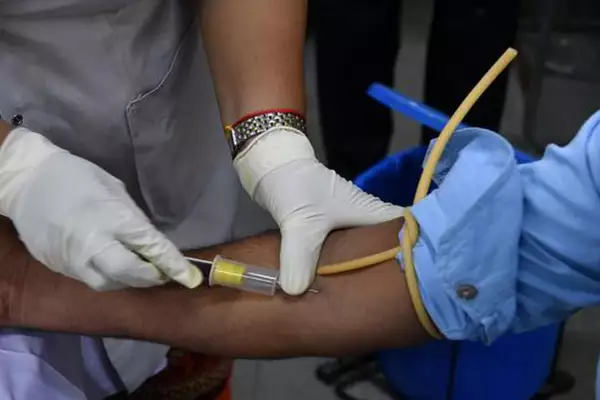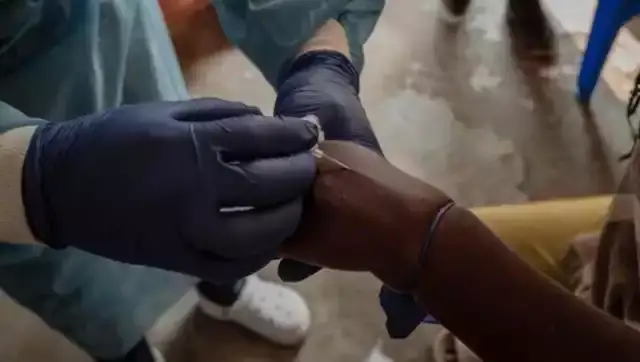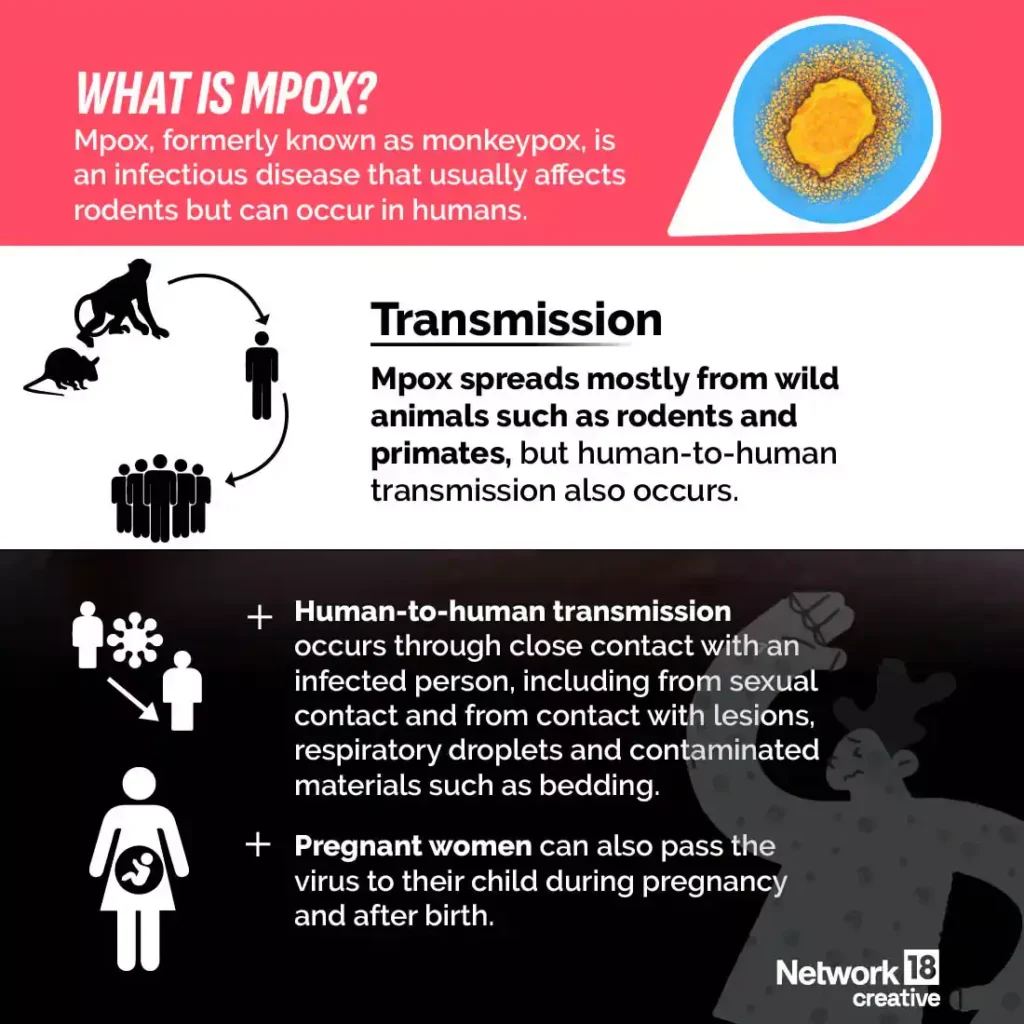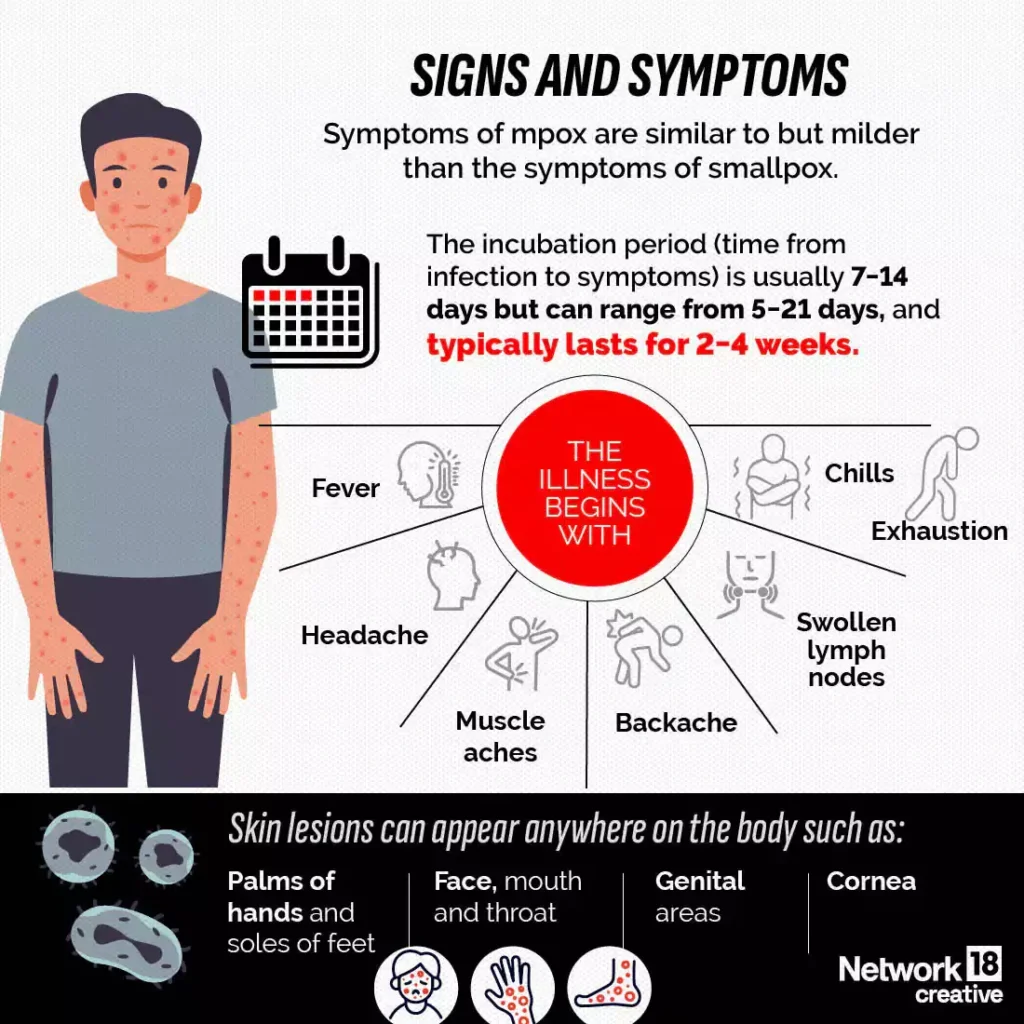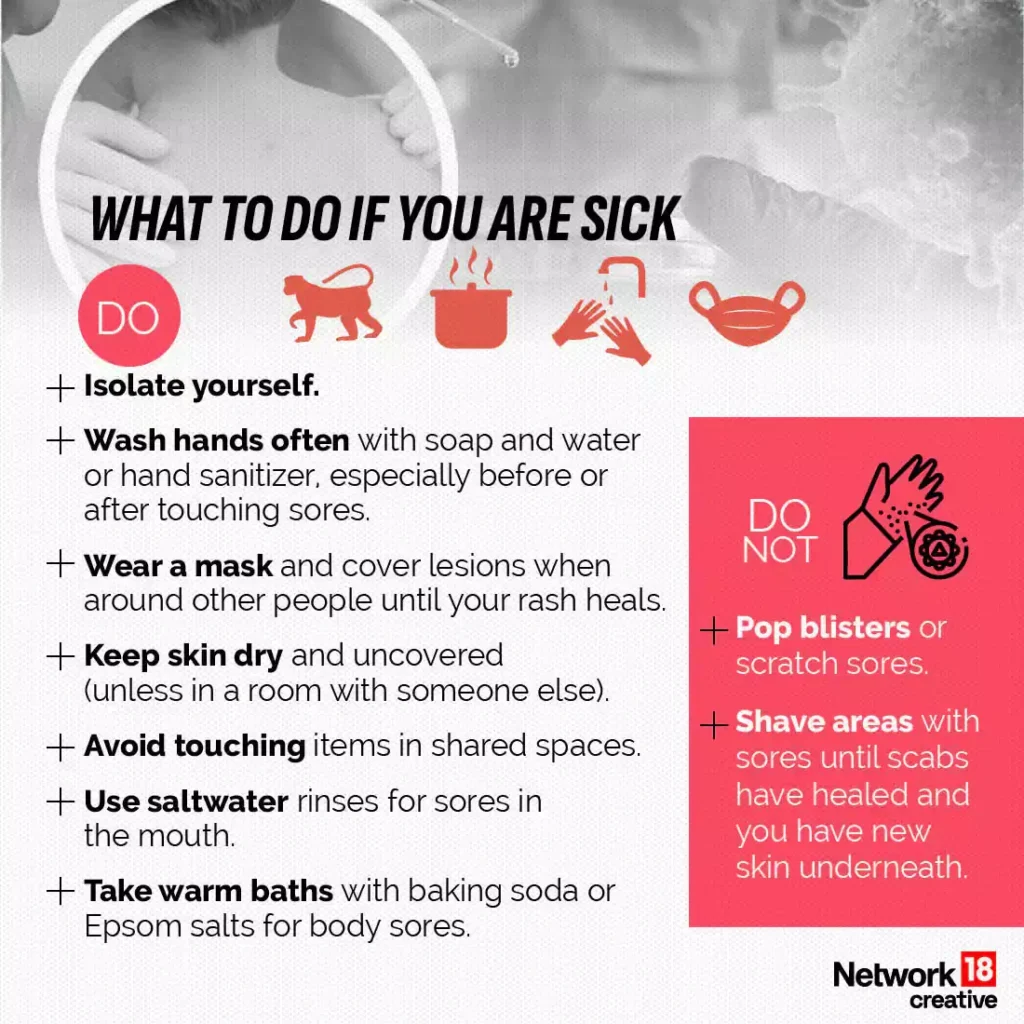The recent spread and transmission of Mpox virus, calls for measures, impacts and prevention through Serosurvey of Mpox disease.
Key Features of Mpox:
- Mpox, formerly known as monkeypox, is a zoonotic viral infection caused by the Mpox virus. It primarily affects rodents and primates but can also infect humans.
- The disease is characterized by fever, rash, and swollen lymph nodes.
- It has two main clades: clade I (more severe), and clade II, which caused the global outbreak in 2022.
Transmission and Symptoms
- Itcan be transmitted to humans through contact with infected animals, such as rodents or primates, or through direct contact with the bodily fluids or lesions of infected individuals.
- It can also spread through contaminated materials or respiratory droplets.
- The infection typically begins with flu-like symptoms, including fever, headache, and muscle aches.
- This is followed by a distinctive rash that progresses from flat spots to raised bumps and then to pus-filled lesions.
- Other symptoms can include swollen lymph nodes and, in severe cases, complications affecting other organs.
Precautions:
History and Global Impact
- Origins: Mpox was first identified in laboratory monkeys in 1958, and the first human case was reported in the Democratic Republic of Congo (DRC) in 1970.
- Recent Outbreaks: In 2022, mpox caused a significant global outbreak affecting over 100 countries. The outbreak saw a surge in cases in Africa and Europe, leading the World Health Organization (WHO) to classify it as a global health emergency.
Current Situation
- Global Data: As of August 2023, there have been around 27,000 reported cases and over 1,100 deaths globally. A new strain of mpox has been identified in Sweden, marking its spread outside Africa.
- Regional Impact: In India, the first case was recorded in 2022, with a few confirmed cases reported in Kerala and Delhi. As of the latest updates, no new cases have been reported recently in India, although there is heightened vigilance due to the global spread.
Preventive Measures
- Vaccination: There is currently no specific vaccine for mpox, but vaccines for smallpox and chickenpox might offer some protection due to cross-reactivity.
- Smallpox and mpox are closely related viruses, and existing smallpox vaccines can help protect against mpox.
- Health Measures: India has implemented several preventive measures, including issuing advisories to major entry points like airports and seaports, enhancing surveillance, and conducting serosurveys.
- Local health officials are focusing on monitoring travelers from regions with active outbreaks.
About Serosurvey:
- A serosurvey is a method used to collect and analyze blood samples (or other specimens like oral fluids) from a specific population over a set period.
- This is to estimate the prevalence of IgG antibodies against an infectious pathogen. This helps gauge exposure, disease burden, or immunity.
- These modules focus on IgG antibodies, as they are commonly detected in serosurveys and are often the best indicators of protection.
- Such surveys can also detect other antibodies like IgM, indicating recent infection, or IgA, associated with mucosal immunity.
- Some assays detect pathogen antigens, like hepatitis B surface antigen, or use techniques like plaque reduction neutralization assays to measure different antibody classes.
Testing for Antibodies:
- IgM: Immunoglobulin M indicates current or recent infection, lasting only a few weeks to months.
- IgG: Immunoglobulin G reflects past exposure to a pathogen or vaccination, with antibodies lasting much longer, sometimes for decades. IgG is typically the primary target in serosurveys.
Uses of Serosurveys:
- Seroprevalence reflects exposure depending on antibody longevity and useful for detecting asymptomatic infections and assessing disease burden in areas with weak surveillance.
- Prevalence of Infection: Estimate chronic infections (e.g., HIV, hepatitis C) where seropositivity indicates current infection.
- Immunity Gaps: Identify immunity gaps by correlating seroprevalence with immunity. This helps in targeting immunization activities and identifying gaps in populations with incomplete vaccination data (e.g., adults, refugees).
- Key Parameters for Modelling: Provide estimates for parameters like the reproductive number and the force of infection for infectious disease models using age-specific seroprevalence curves.
Vaccination Coverage Surveys vs. Serosurveys:
- Vaccination Coverage Surveys measure the proportion of individuals vaccinated through records or recall but do not assess seroprotection or immunity.
- Vaccination does not guarantee immunity, and immunity may wane over time.
- Serosurveys provide direct estimates of seroprevalence and can distinguish between immunity from vaccination versus natural infection.
- They are useful for age groups not covered by vaccination coverage surveys and for populations without comprehensive vaccination records.
- Although more logistically complex and costly, they offer more accurate insights into population immunity.
Key Definitions:
- Seropositivity: The detection of IgG antibodies above a certain threshold, indicating exposure to a pathogen. This threshold affects the assay’s sensitivity and specificity and can vary based on the serosurvey’s goal.
- Seropositivity may suggest protection against infection or disease.
- Seroprevalence: The proportion of individuals in a population who test seropositive for a specific pathogen, typically expressed as a percentage of the total number tested.
- Seroprotection: The presence of IgG antibodies above a level deemed protective, though such thresholds are not well-defined for many pathogens.
- Serosurveillance: The systematic collection and testing of specimens for antibodies against specific pathogens, conducted periodically to monitor changes in seroprevalence over time.
Ref: Source
| UPSC IAS Preparation Resources | |
| Current Affairs Analysis | Topperspedia |
| GS Shots | Simply Explained |
| Daily Flash Cards | Daily Quiz |
Frequently Asked Question:
What is a serosurvey?
A serosurvey is a method used to collect and analyze blood samples from a defined population over a specific period to estimate the prevalence of IgG antibodies against an infectious pathogen. This helps to gauge exposure, disease burden, or immunity in the population.
Why are IgG antibodies the focus of most serosurveys?
IgG antibodies are commonly detected in serosurveys because they are often the best indicators of past exposure to a pathogen or vaccination and tend to last longer in the body compared to other antibody types.
Can serosurveys detect other types of antibodies?
Yes, serosurveys can also detect IgM antibodies, which indicate recent infection, or IgA antibodies, associated with mucosal immunity. Some assays may also detect pathogen antigens, such as hepatitis B surface antigen.


